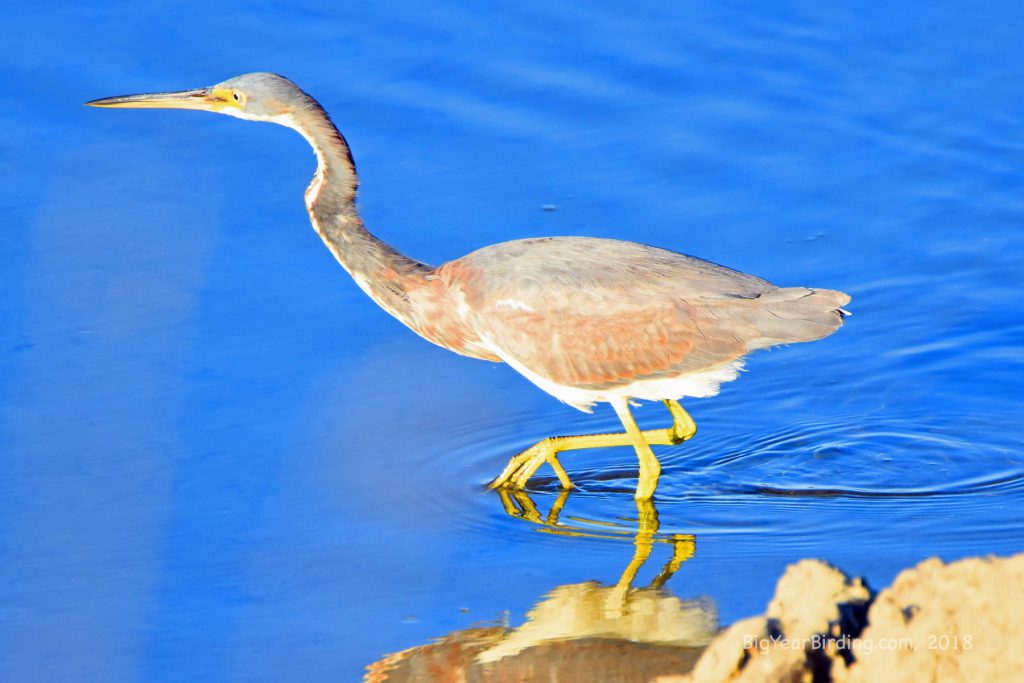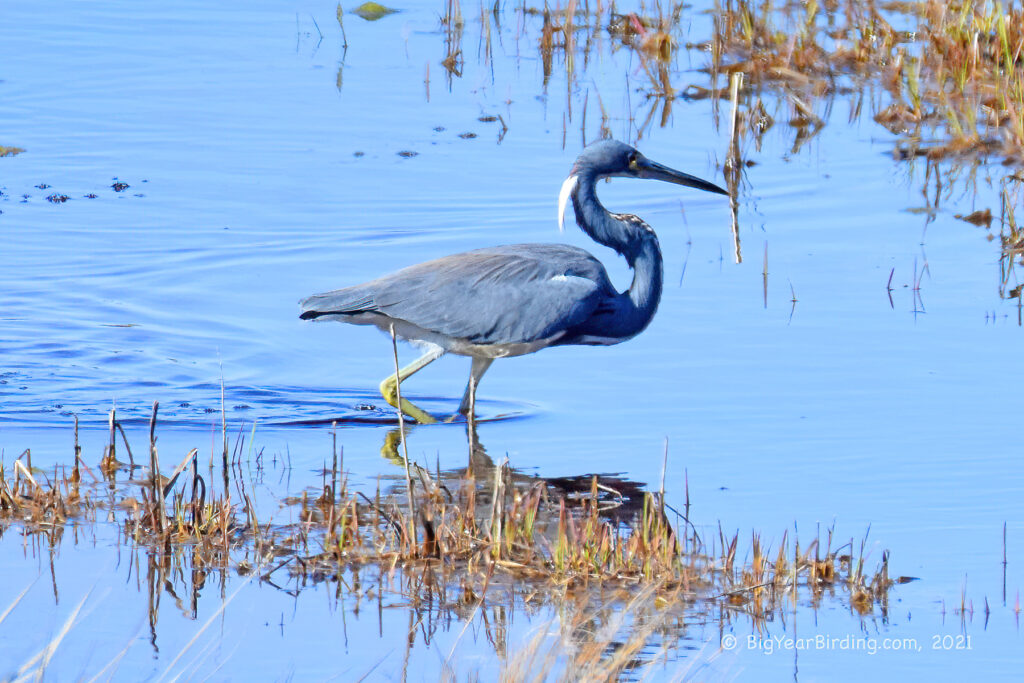
The Tricolored heron (Egretta tricolor) is a small to medium-sized heron species found in the Americas. Adults range from 22 to 26 inches (56-66 cm) in length and have a wingspan of approximately 36 inches (91 cm). They weigh between 11 to 16 ounces (311-454 grams). Tricolored herons are known for their slender build and long, thin necks. They have a blue-gray body, a white belly, and distinctive blue-purple streaks on their necks and heads. They also have a distinctive, slender, black bill that is slightly curved. During breeding season, they develop bright blue patches on their bills and around their eyes, which are used to attract mates.

One of the distinguishing field marks of the Tricolored heron is its distinctively patterned plumage. Their upper body and wings are blue-gray, and they have a striking white belly. Their necks and heads are adorned with blue-purple streaks that appear as subtle bands, and their legs are a bright yellow. Juvenile Tricolored herons have duller plumage with more brown tones and lack the distinctive head and neck streaks of adults.
The Tricolored heron is a non-migratory species, meaning they remain in their range throughout the year. They are found in freshwater and saltwater habitats in the southern United States, Central America, and northern South America. Tricolored herons prefer to hunt in shallow water and can often be seen standing motionless in the water, waiting for prey to come within striking distance. They primarily eat small fish and crustaceans, but they will also eat insects and other small invertebrates.
During the breeding season, which takes place from February to July, Tricolored herons engage in elaborate courtship displays, which involve bill-clapping, wing-flapping, and ritualized preening. They build nests in colonies with other heron species in trees and shrubs near the water’s edge. The female lays three to five eggs, which are incubated for approximately 21 days. After hatching, the chicks are cared for by both parents, and they fledge after approximately 28 to 35 days.

In summary, the Tricolored heron is a striking bird with distinctive blue-purple streaks on its neck and head, a white belly, and a yellow bill. They are non-migratory and are found in freshwater and saltwater habitats in the southern United States, Central America, and northern South America. Tri-colored herons are known for their hunting habits, waiting motionless in shallow water for prey to come within striking distance. During breeding season, they engage in elaborate courtship displays, build nests in colonies, and care for their chicks until they fledge.

